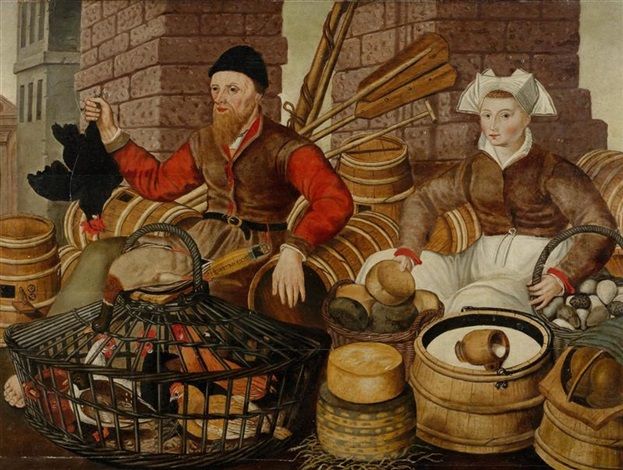Inventions of Ancient China

Contents
- Introduction
- Compass
- Silk
- Gunpowder
- Paper Making
- Printing

Introduction
The ancient Chinese civilization is renowned for its many remarkable inventions and advances in technology. From the invention of gunpowder to the creation of paper money, ancient China has left an indelible mark on world history with its ingenious ideas. Numerous records from antiquity attest to the ingenuity and creative spirit of this great empire’s people. One of the most prominent inventions in early Chinese history was silk production. Invented around 3000 BC by Leizu, a legendary queen during the reign of Emperor Huangdi, it revolutionized textile production throughout East Asia and beyond. This newfound luxury item quickly spread around the globe and became a major factor in international trade for centuries afterwards. Other groundbreaking inventions include iron smelting techniques, advanced irrigation systems which facilitated large-scale agricultural projects, compasses used for navigation, seismographs used to detect earthquakes and much more.
Compass
The invention of the compass has been an essential part of human history and can be traced back to Ancient China. The earliest known compasses were used for divination by the Chinese during the Zhou dynasty (1046-256 BC). In ancient times, these devices were made from lodestones, which are naturally magnetized pieces of iron ore.
The use of a compass in navigation and exploration was first documented during the Han Dynasty (206 BC – 220 AD). During this time, compasses were also used for fortune telling and geomancy. This form of divination was based on orienting objects according to magnetic directions. Moreover, compasses played a key role in aiding seafaring through uncharted waters by providing direction when visual navigation became impossible due to poor visibility or darkness.
Silk
Since ancient times, China has been a world leader in innovation and invention. One of the most famous inventions to come out of ancient China is silk. Dating back as far as 3,500 years ago, Chinese artisans were known for their ability to craft strong yet lightweight fabrics from the delicate cocoons of silkworms.
This material was highly valued by Chinese emperors and their courts; it was seen as a symbol of wealth and status amongst many other cultures who wanted access to this luxurious fabric. As an example, Silk Road merchants would travel all around Asia trading for China’s precious commodity! Chinese artisans developed different methods for weaving silk threads into various fabrics, creating intricate hand-crafted designs that have endured throughout time.
Gunpowder
“Gunpowder, a concoction of saltpetre, sulfur, and charcoal, was first made by the ancient Chinese in the 9th century. It is widely regarded as one of Ancient China’s most important inventions and has had a significant impact on world history.
The invention of gunpowder is attributed to Chinese alchemists who were attempting to create elixirs for eternal life. The recipe for gunpowder was discovered during their experiments with various combinations of materials. This discovery enabled them to develop not only weapons such as guns and cannons but also fireworks that brought sound and light into their festivals.
Gunpowder revolutionized warfare tactics in the Middle Ages by providing powerful weapons that could be used from a distance without endangering soldiers’ lives. Its use spread rapidly throughout Asia, Europe and Africa and it eventually became an essential part of military strategy around the world.
Paper Making
Paper-making by Ancient China is one of the most influential inventions in Chinese history, as it revolutionized communication and has been used for centuries in various forms. Originating during the Eastern Han Dynasty (25-220 CE), the paper was created from a variety of materials such as hemp, bark, fabrics and fishnet. The invention was then perfected by Cai Lun during the early 2nd century CE. He added wood pulp to his paper mixture, which allowed for more durability and flexibility in comparison to previous attempts at paper-making.
The invention of paper increased literacy rates within China due to its affordability, which allowed people to access books previously reserved for wealthier citizens who could afford parchment or inscribed bamboo strips. The paper quickly replaced these materials as it was much easier to produce and transport large quantities of documents across vast distances.
Printing
It was first invented by the Chinese in the 11th century and they referred to it as “block printing”. This technique involved carving characters into wooden blocks and then pressing it onto paper or cloth. The invention of block printing revolutionized communication in ancient China, as it allowed knowledge to be disseminated quickly and more efficiently than ever before.
Block printing was improved over time, with new techniques such as copperplate engraving emerging during the 15th century. This enabled greater accuracy and detail when producing prints. By 1620, books were printed on a large scale with movable typefaces that could be rearranged for different texts. This method made letterpress much faster and cheaper than hand-copied manuscripts which were more commonly used at the time.


